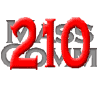

Office: 293.1489
Fax: 237.4662
NEHanson@aol.com
Mass Communications 210
Media Writing
AP Style: Days, Dates and Times
Months: When a month is used with a specific date, abbreviate Jan., Feb., Aug., Sept., Oct., Nov. and Dec. Spell out the monthís name when it stands alone.
Dates always appear as cardinal numbers, not ordinals: not th, nd, rd (etc.)
| Class meets on Feb. 14. The class meets four times in February. |
Punctuation: When month, date and year appear together, the month and date are set off by a comma. When the full date (including year) appears within a sentence, the year is also set off with a comma.
| She was born on Dec. 24, 1949, at St. Johnís Hospital. |
Season: Lowercase the names of seasons UNLESS they appear with a year.
| The class begins in the spring. BUT The festival first took place in Winter 2008. |
Month and Year: When the month appears with the year ó but without a date ó the two words are not set off with commas.
| Lydia Hannaher resigned in June 1999. The tour took place in July 1967. The April 1950 flood made history. |
Using the Year With Dates:
Dates within the current year, especially those close to today, usually do not require the year. Use years only when they are different from the current one EXCEPT "2008" isnít necessary in December stories about upcoming 2009 events.| The second semester began on
Jan. 10. [NOT Jan.
10, 2008.] The meeting is scheduled for March 1 [NOT March 1, 2008.] |
Time of day: Exact times arenít usually necessary in news and feature writing except in reference to when events will start.
| The shopper was accosted outside of Target on Monday evening. NOT USUALLY ... at 7:45 p.m. Monday. | |
| Use figures for all times except for noon and midnight. Use a colon to separate hours from minutes. [3:30 p.m.] |
Donít use the zeroes for times on the hour. [11 a.m., 2 p.m. NOT 11:00 and 2:00)
Times are designated by [a.m.] and [p.m.]. [NOT AM, PM, A.M. and P.M.]
| Since "a.m." and
"p.m." designate early or late in the day, itís
redundant to restate the daypart. NOT "... at 6:30 p.m. this evening." ó just "at 6:30 p.m." |
Day of the week:
Days of the week are not normally used along with exact dates.Use day of the week for the immediate past or coming seven days, and dates for more distant occurrences.
| The latest flood meeting was held Monday. BUT: The first meeting was held Sept. 1.. | |
| The Class B finals are on Saturday. BUT: The Easter parade is on March 30. |
NEWSWRITING STYLE TIP: The time factor ó days, dates and times ó almost never leads off the story. Nor is it used at the beginning of a sentence (unless itís the most important point). Days, dates and times are traditionally placed at the end.
--------- Standard sentence structure: Who ... what (verb) ... where ... when. ------i
1. The final is scheduled for May 9th, 2008.
2. Shortly before 12 a.m. on Tuesday, February 12, the suspect was apprehended by police.
3. The newspaper edition of Wednesday, June 13, 2007 included a picture of Jody Foster at age seven.
4. The Hansons were married at 3:00 in the afternoon on April 19 of 1975.
5. Rev. Ruben Hatzenbuehler will retire in Dec., 2009.
6. The picketers began marching toward the courthouse at 12 p.m. on Tuesday, June 19, 2007.
7. The 6:00 AM news carried hundreds of school closings and cancellations.
8. His next dental appointment is at 1 oíclock on Jul. 3.
9. At 5:45 p.m. tonight this class will adjourn.
10. Orientation sessions begin at 9:00 a.m., 11:30 a.m., 1:30 p.m. and 3:30 p.m.